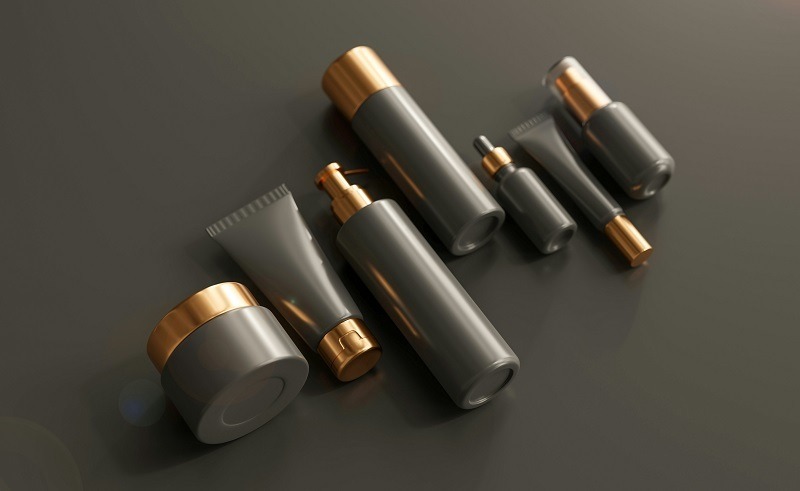Cosmetic packaging has evolved from a mere protective shell into a strategic brand asset that shapes first impressions, enriches user experience, and even safeguards formula performance. In an oversaturated beauty market, custom cosmetic packaging is no longer a luxury; it is the price of entry for brands determined to stand out on crowded shelves and social-media feeds.
A distinctive bottle silhouette, a tactile matte finish, or a perfectly weighted jar can transmit brand personality faster than any advertisement, while functional details—such as airless pumps for oxygen-sensitive serums or child-resistant closures for medical balms—signal professionalism and regulatory compliance.
Shoppers now expect packaging to mirror their values, whether that means luxe minimalism, playful maximalism, or uncompromising sustainability. For marketers, the carton, cap, and container have become storytelling canvases as powerful as the product itself.
Partnering with the Right Cosmetic Packaging Manufacturer
Turning vision into reality requires tight collaboration with a skilled cosmetic packaging manufacturer that can navigate the intersection of design ambition, engineering feasibility, and regulatory nuance. The process begins with a deep-dive briefing in which brand managers share formulation data, launch timelines, budget ceilings, and sustainability targets. Industrial designers then translate these insights into three-dimensional concepts, balancing aesthetics with tooling constraints.
Virtual simulations test ergonomics, shelf impact, and structural integrity long before steel molds are cut. Once a direction is chosen, the manufacturer produces small-batch prototypes—often within ten days—using CNC-machined cavities or SLA-printed inserts.
These samples endure drop tests, leak checks, and focus-group scrutiny; color masters are evaluated under multiple light sources to ensure that the rose-gold pump collar matches the foil logo on the carton. Only when every stakeholder signs off are high-cavitation molds commissioned, locking critical tolerances that will keep future scale-ups trouble-free.
Material Selection
Material selection has become a sophisticated balancing act of performance, aesthetics, and eco-credentials. Glass remains the gold standard for prestige skincare thanks to its weight, recyclability, and barrier properties; borosilicate grades offer thermal shock resistance for temperature-sensitive actives, while soda-lime delivers cost efficiency for mass lines. Plastics have diversified: PETG provides near-glass clarity and impact strength; PP delivers chemical resistance for aggressive formulas; SAN offers high gloss without the brittleness of acrylic; and post-consumer-recycled resins satisfy rising sustainability mandates.
Metals such as aluminum add luxe heft and infinite recyclability, while FSC-certified rigid paper boxes elevate unboxing theatre and boost perceived value. Inside the package, wipers, gaskets, and actuator springs can now be specified in bio-based or silicone-free elastomers to accommodate clean-beauty formulations.
Sustainability
Sustainability pressures are accelerating the shift toward the refillable cosmetic packaging set, a system that separates long-life components—such as glass outers or anodized-aluminum shells—from lightweight, mono-material inner cartridges that consumers replace. A typical set features a durable outer vessel designed to last five years, a snap-fit inner cartridge that minimizes residual waste, a twist-off refill cap, and a transit plug to prevent leakage in e-commerce.
For brands, the model offers recurring revenue from refill sales, dramatic reductions in material use per application, and valuable “reuse” credits under emerging extended-producer-responsibility laws. From an engineering standpoint, refillables demand micron-tight tolerances so cartridges made months apart remain interchangeable; the cosmetic packaging manufacturer must also validate pump piston durability for fifty or more dispensing cycles to guarantee consumer confidence.
Decoration technology has kept pace with creative demands. Multi-pass silk-screening lays down opaque whites on cobalt glass, while UV-curable digital presses enable variable artwork—different shades, languages, or influencer names—without halting the print run. Hot-foil stamping adds metallic drama, and textured lacquers give fingertips a soft-touch surprise.
Smart embellishments are on the rise: NFC chips hidden beneath labels unlock authenticity checks and loyalty rewards; thermochromic inks reveal messages at skin temperature; QR-linked holograms transport customers to tutorials or recycling instructions. These interactive layers transform packaging from a static object into a dynamic brand gateway.
Cost
Cost control remains a constant concern, and customization doesn’t have to blow the budget. Savvy startups often blend proprietary and stock elements—commissioning a custom cap or outer jar while pairing it with a catalog pump—to gain recognizable DNA without six-figure tooling bills. Mid-tier brands may amortize mold costs by designing a modular family: the same glass body accepts droppers, sprayers, or pump assemblies for serums, mists, and lotions, letting marketing teams spin fresh narratives without re-engineering the vessel. Even heritage giants, flush with capital, watch pennies by specifying shared neck finishes across multiple lines, simplifying supply chains and easing recycling for end users.
Challenges
Challenges inevitably surface. Achieving color parity between anodized aluminum caps and metallized PET labels requires spectrophotometric calibration at each plant. Supply-chain volatility can derail timelines if a specialty pigment or PCR resin faces geopolitical disruption, making dual sourcing and safety stocks prudent.
Regulatory landscapes shift too: microplastic glitter bans or new labeling rules can force last-minute artwork revisions. A seasoned cosmetic packaging manufacturer mitigates these risks through transparent communication, robust quality systems, and pre-approved alternative materials ready to deploy.
Looking ahead, two megatrends dominate innovation roadmaps: circularity and digitalization. Reusable airless systems targeting fifty refills are undergoing beta trials, while blockchain-linked serial codes promise cradle-to-grave traceability that satisfies both regulators and eco-conscious consumers.
Additive manufacturing is edging into elastomeric gasket production, lowering the investment threshold for indie brands eager to leap from kitchen to Sephora with fully bespoke vessels.
Meanwhile, life-cycle-assessment software integrated into design suites helps teams quantify carbon savings of a refillable cosmetic packaging set versus its single-use predecessor, translating sustainability rhetoric into credible metrics.
Final Words
In sum, custom cosmetic packaging sits at the confluence of design, engineering, and environmental stewardship. Whether the aim is an opulent limited edition draped in faceted glass or a minimalist, carbon-neutral refill capsule, success hinges on partnering with a forward-thinking cosmetic packaging manufacturer able to orchestrate creative ideation, technical rigor, and global compliance.
As refill norms solidify and interactive features mature, tomorrow’s winning packages will harmonize form, function, and footprint—capturing consumer loyalty while respecting planetary limits.


